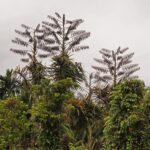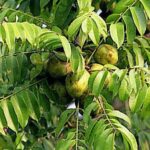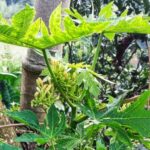English: Giant taro; Scientific name: Alocasia macrorrhiza (L.) Schott; Synonyms: Alocasia indica (Lour.) Spach; Plant family: Araceae

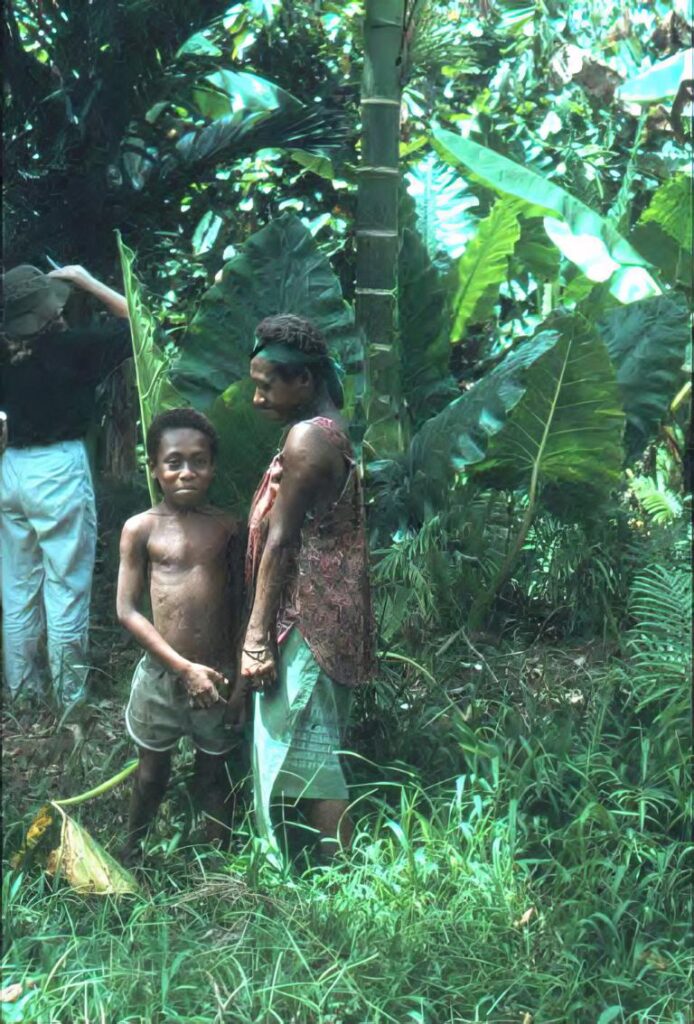
Description of Giant Taro plants
A very large herb of the taro family. It has a stout erect trunk up to 4 m tall. This has upright leaves which are arrow-shaped. The leaves have round lobes at the bottom. The leaves are leathery and are often wavy around the edge. The secondary veins are not prominent. The leaf blade can be 1.0 – 1.2 m long. The leafy structure around the flower is yellow in the upper section. It forms a hood and drops off as the flower opens. The fruit is bright red berries. The corm is large, often curved, and above the ground. It often has cormels, or small corms, at the side. Brown trailing fibers of the leaf bases often hang from the stem. The leaves and petioles, or leaf stalks, contain stinging crystals.
Distribution of Giant Taro
It is mostly grown in tropical regions in Asia and the Pacific. It is widely distributed in open wetlands along streams and some types of humid forests. The plant grows wild from sea level up to 2600 m altitude in the tropics. Giant taro is a tropical plant and will not grow well below 10°C. It requires a well-distributed rainfall and does not tolerate drought. Even though it grows along creek banks, it cannot tolerate wet soil. It is only used as food in a few coastal areas. Wild forms commonly seen growing are bitter and not used. It suits hardiness zones 11 – 12.
Cultivation of Giant Taro
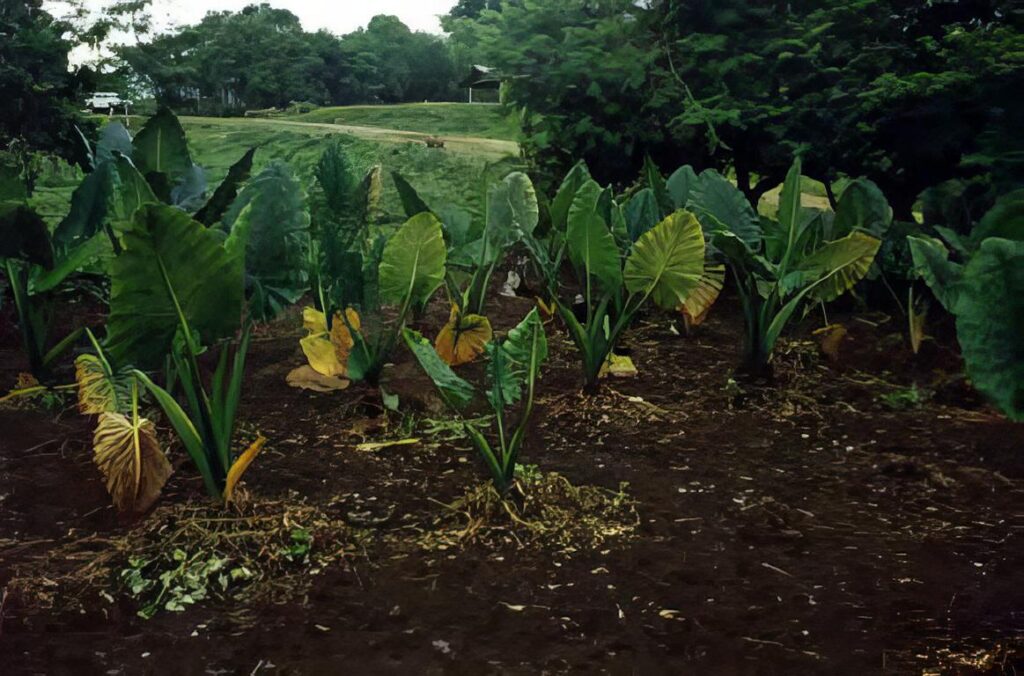
The top of the main corm is planted. The small round cormels can be planted but are slow to mature. A spacing of 1.2 m x 1.2 m is suitable.
Production
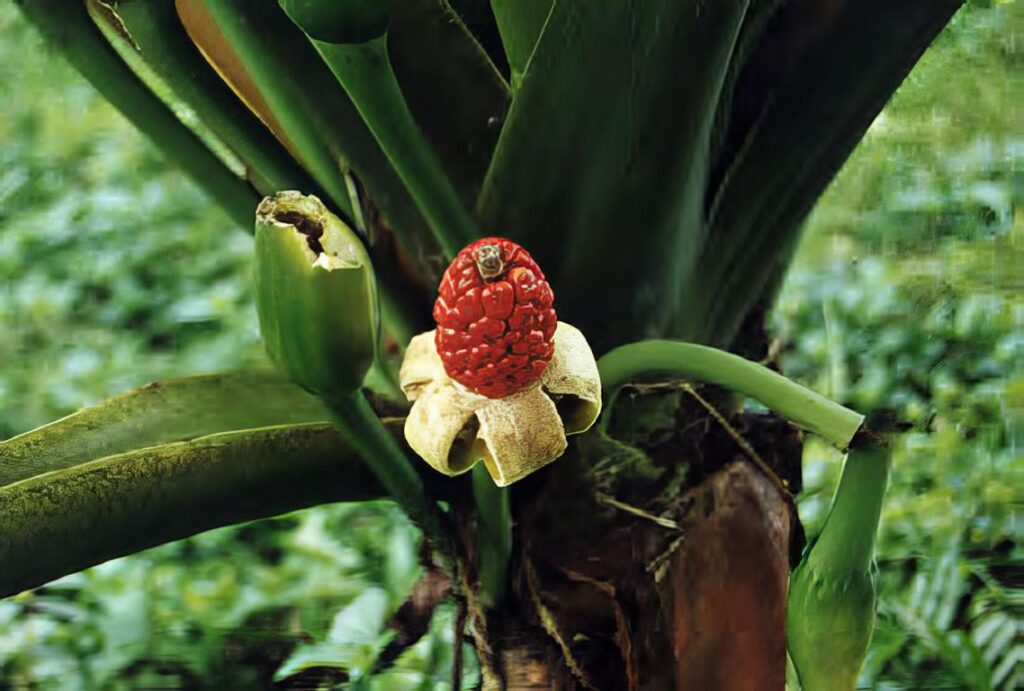
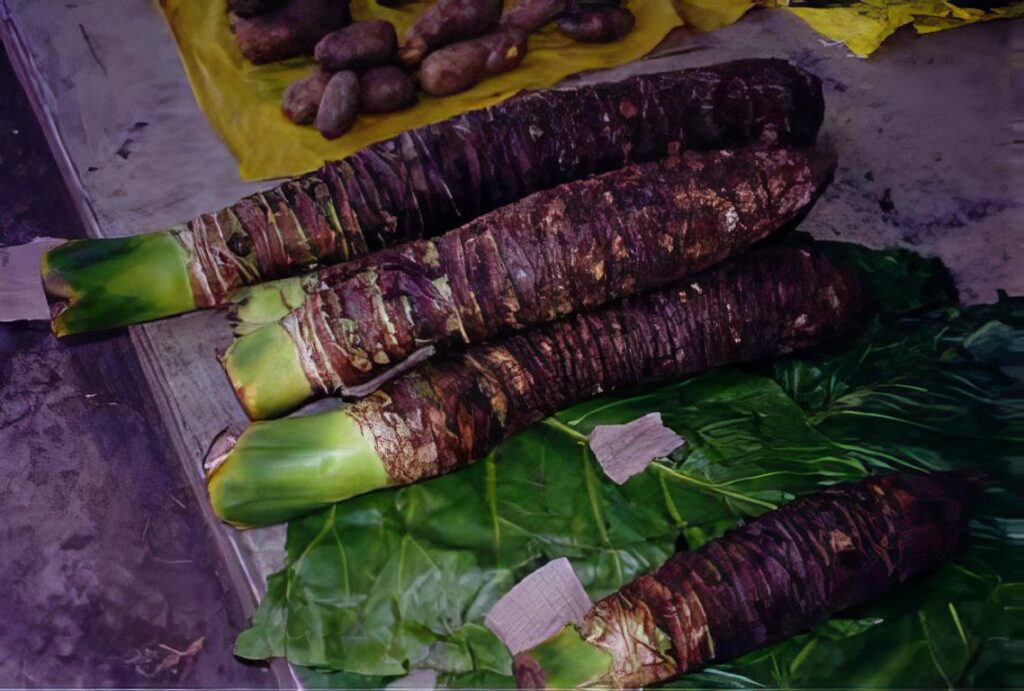
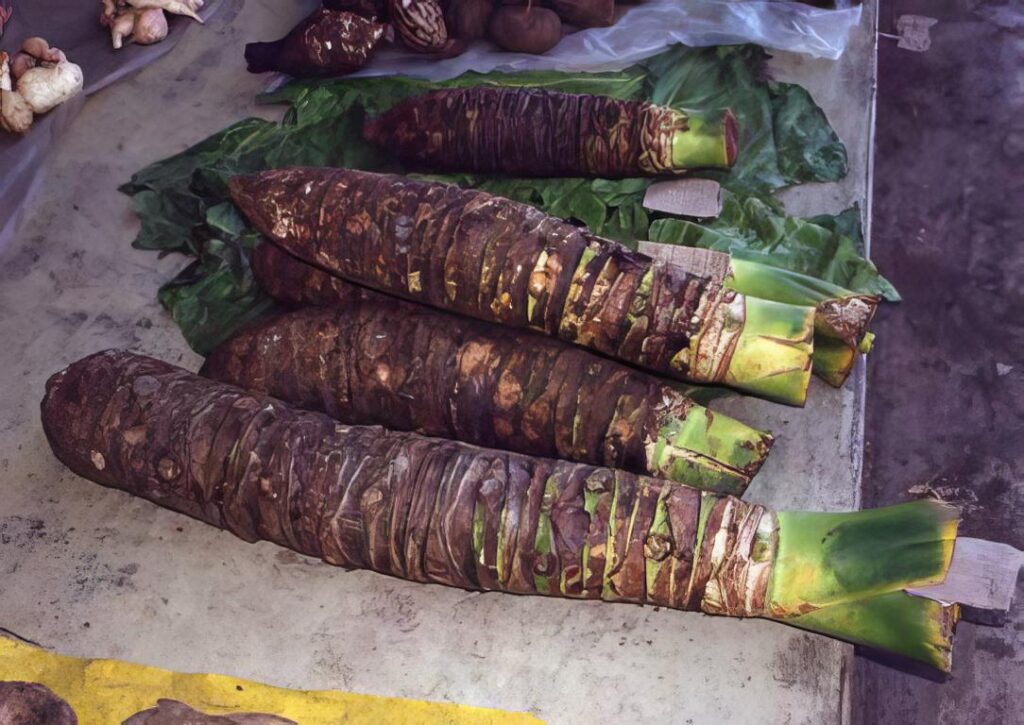
Because the giant taro takes more than a year to be ready to harvest, it often ends up left growing in an old garden site without much care or weeding until the owner wants to harvest it. Corms of 8.5 – 40 kg have been harvested from individual plants of unknown age. The time to maturity is about 12 months, but plants are often left for 2 – 3 years.
Use of Giant Taro
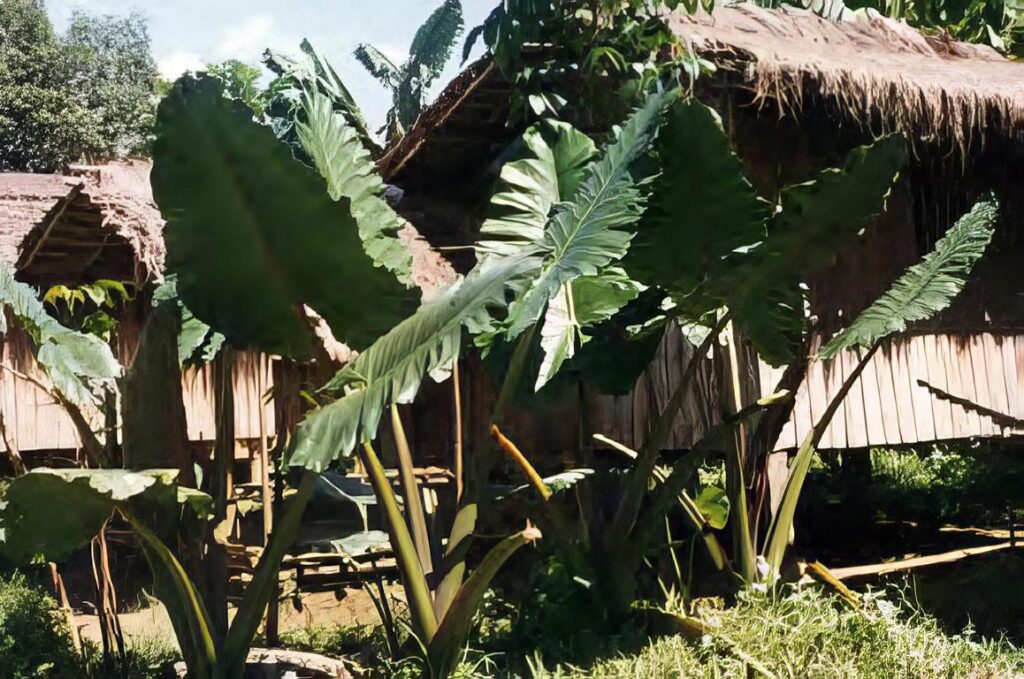
Giant taro is an important crop in some areas of the Solomon Islands and other Pacific Islands. The stems and corms are eaten after roasting or boiling. The main corm is cooked and eaten after being carefully peeled. The young leaves are edible. The leaf stalk is also eaten.
CAUTION: The mouth can be irritated by chewing improperly cooked plant parts due to chemicals called oxalates. Giant taro contains these small needle-like calcium oxalate crystals in the tissues. It is necessary to remove these during the preparation and cooking. The method of peeling is important. Some ladies who are especially experienced at peeling normally do this job.
The taro corm is often left to wilt for a week after it is harvested and before it is used. The stem is baked for a long time, or boiled in several changes of water, to help remove some of the crystals. It is also important to use the right variety of giant taro because the kinds grown in gardens have less of a chemical than wild ones.

Insect pests
Citrus rust thrips (Chaetanaphothrips orchidii); (Eucalymnatus tessellates); Taro beetles (Papuana aninodalis); Taro beetles (Papuana huebneri); (Planococcus pacificus); Cottony urbicola scale (Pulvinaria urbicola)
________________________________________________________________________________________________________________
Text and all photos at this article © Food Plant Solutions. The professional background and contact information of the author of this article can be found here.
.



